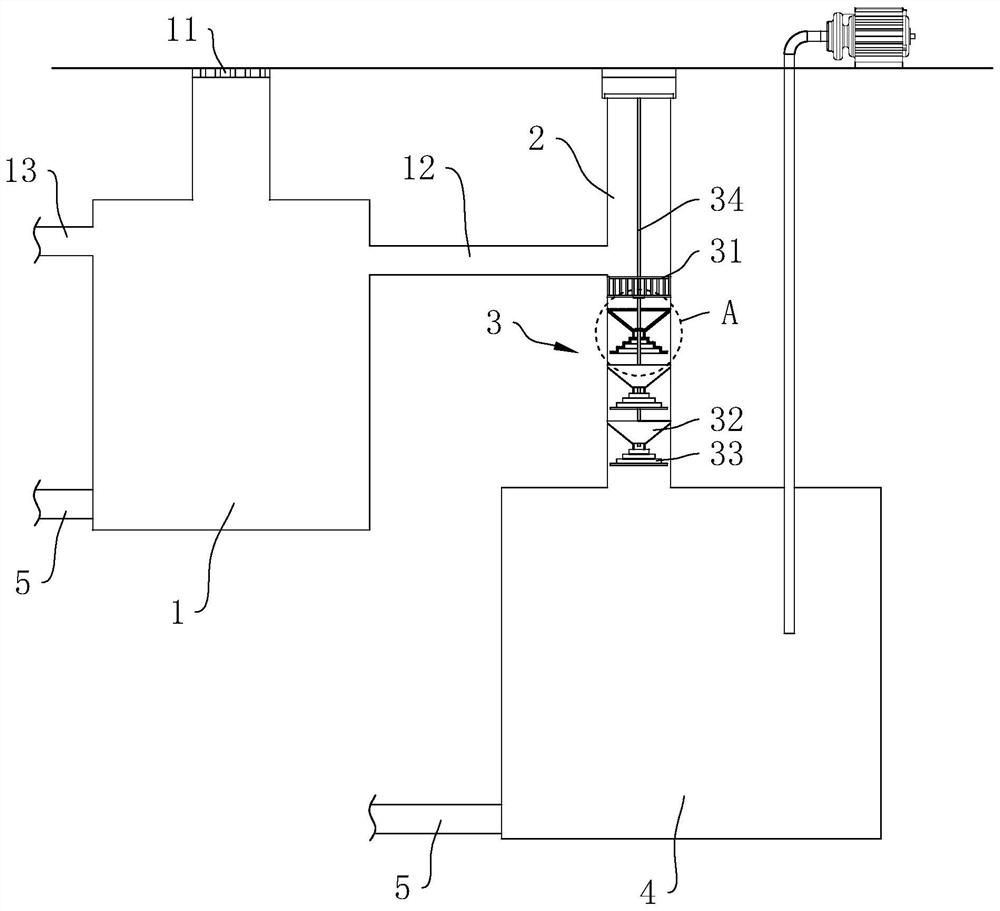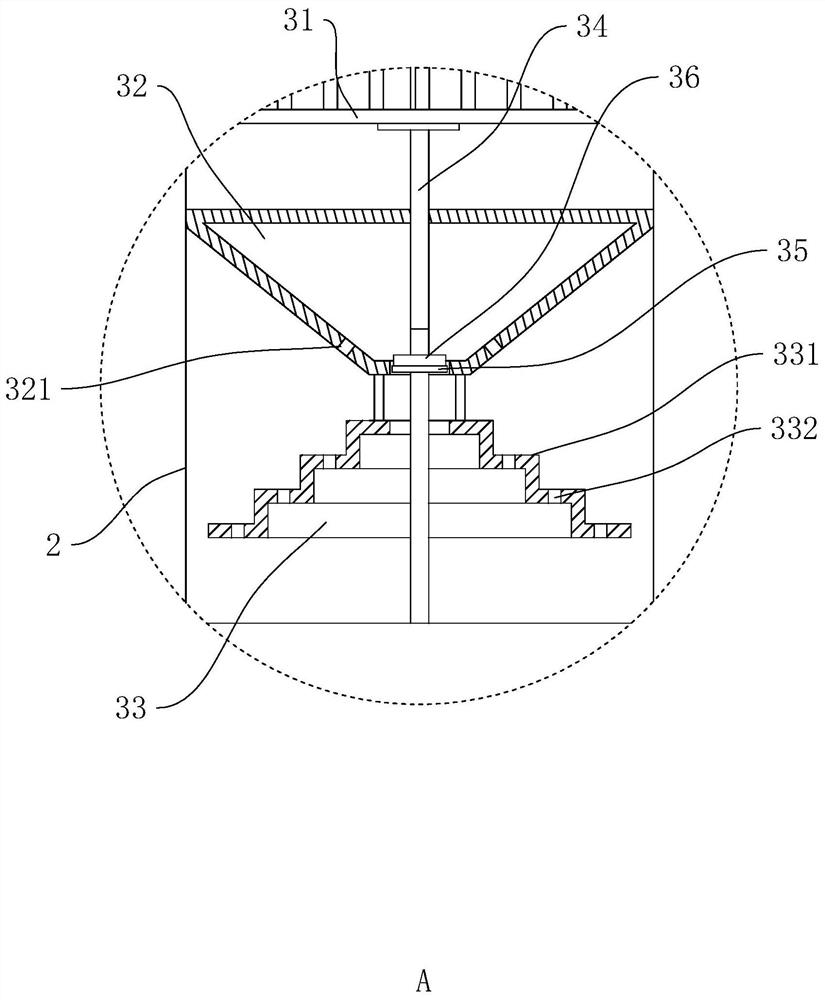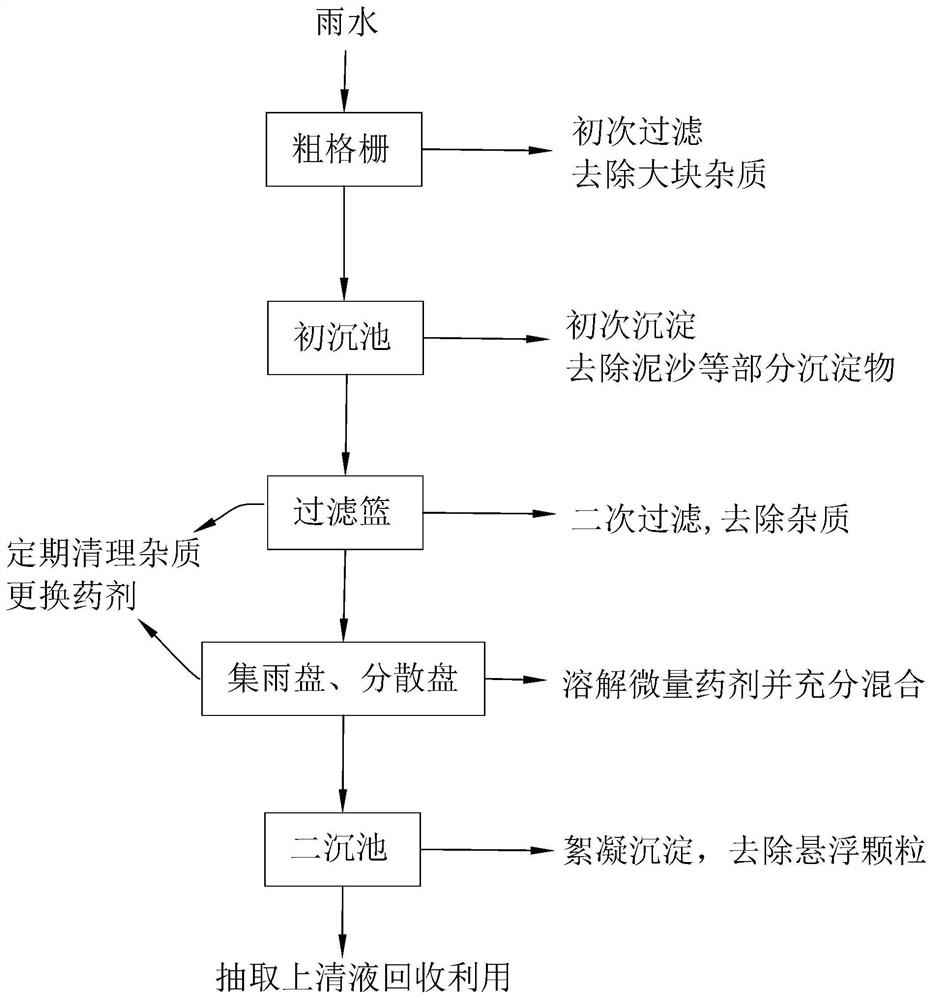Rainwater recovery treatment process suitable for landscape architecture
A technology for recycling and processing rainwater. It is applied in the fields of runoff/rainwater treatment, water/sewage treatment, and multi-stage water/sewage treatment. It can solve the problems of long treatment period, troublesome, and difficulty in realizing short-term water purification.
- Summary
- Abstract
- Description
- Claims
- Application Information
AI Technical Summary
Problems solved by technology
Method used
Image
Examples
Embodiment 1
[0046] The application discloses a treatment pond applied to the rainwater recovery treatment process of garden landscape.
[0047] refer to figure 1 , the treatment tank includes primary settling tank 1, secondary settling tank 4 and shaft 2, the bottom of primary settling tank 1 and secondary settling tank 4 are connected with sewage pipe 5 for extracting sludge, and the top of primary settling tank 1 extends to On the ground, a coarse grid 11 is installed on the top of the primary sedimentation tank 1, and the side wall of the primary sedimentation tank 1 is connected with a drainage pipe 13 and a water flow channel 12 for rainwater overflow. The drainage pipe 13 is higher than the water flow channel 12, and the drainage pipe 13 is connected The municipal drainage pipe network is connected. When the rainfall is large, it can be drained through the drainage pipe 13 to control the rainwater flow of the water channel 12. The shaft 2 is connected with the water channel 12. The ...
Embodiment 2
[0068] The difference from Example 1 is that the preparation method of the flocculation agent 36 in Example 2 includes the following steps:
[0069] S1. Mix 0.5kg of ethyl cellulose, 0.3kg of diacetone acrylamide, 0.15kg of xylan, and 2L of water, raise the temperature to 90°C, add 25mL of initiator dropwise, mix at constant temperature for 2 hours, and filter to obtain a solid And dry to constant weight, obtain cellulose polymer;
[0070] S2. Mix 0.2kg of polyaluminum chloride, 0.07kg of polylysine and 100mL of water to form a mixed wet powder, extrude and granulate the mixed wet powder into 60-mesh particles, and dry at 100±10°C to constant weight;
[0071] S3. Sieve all the dried particles obtained in S2 into 60-mesh sieves, dissolve 0.13kg of cellulose polymer in 100mL of 85% ethanol, and then coat the sieves. Dry at 10°C to constant weight to obtain coated granules;
[0072] S4. Mix all the coated granules prepared in S3, 0.05kg of wax, 0.3kg of diatomaceous earth, 0.1...
Embodiment 3-4
[0075] The difference from Example 1 is that the dosage of each component of the flocculation agent in Examples 3-4 is shown in Table 2.
[0076] See Table 2 (unit: kg) for the dosage of each component of the flocculation agents in Examples 1-4.
[0077] Table 2
[0078]
[0079]
PUM
 Login to View More
Login to View More Abstract
Description
Claims
Application Information
 Login to View More
Login to View More - R&D
- Intellectual Property
- Life Sciences
- Materials
- Tech Scout
- Unparalleled Data Quality
- Higher Quality Content
- 60% Fewer Hallucinations
Browse by: Latest US Patents, China's latest patents, Technical Efficacy Thesaurus, Application Domain, Technology Topic, Popular Technical Reports.
© 2025 PatSnap. All rights reserved.Legal|Privacy policy|Modern Slavery Act Transparency Statement|Sitemap|About US| Contact US: help@patsnap.com



